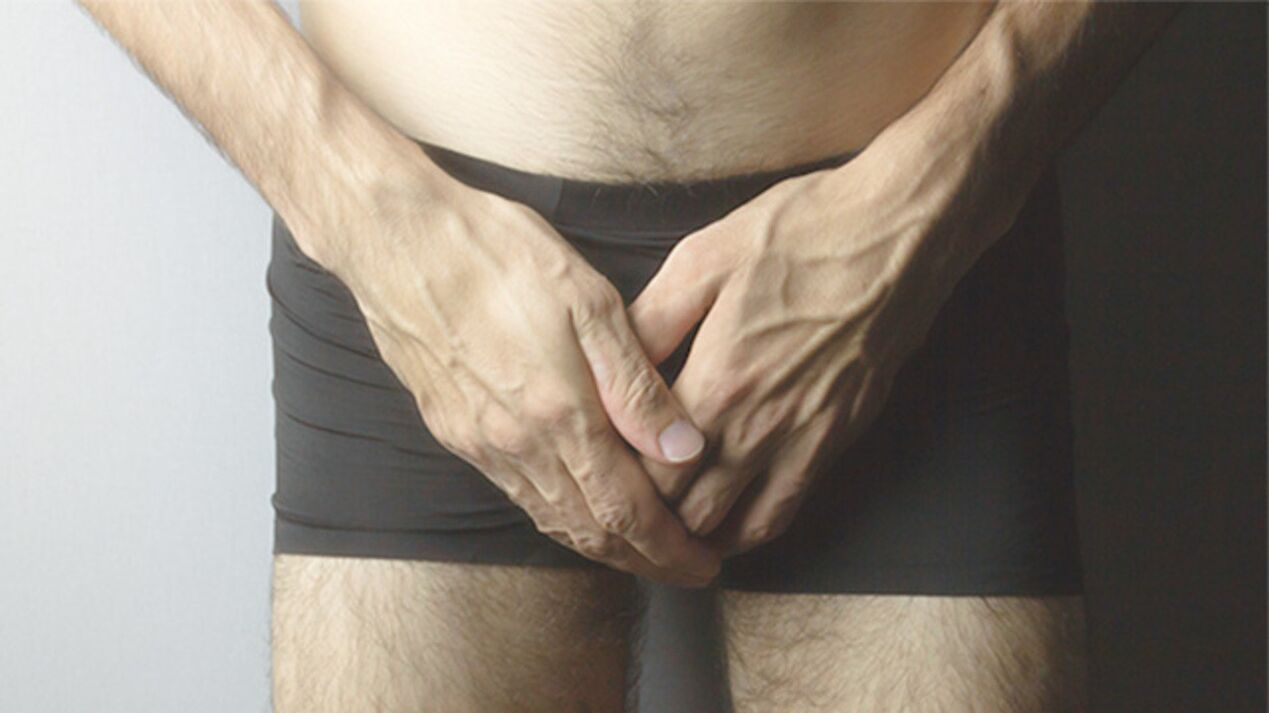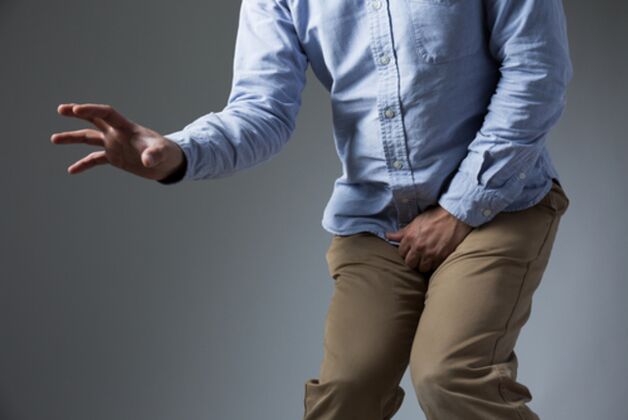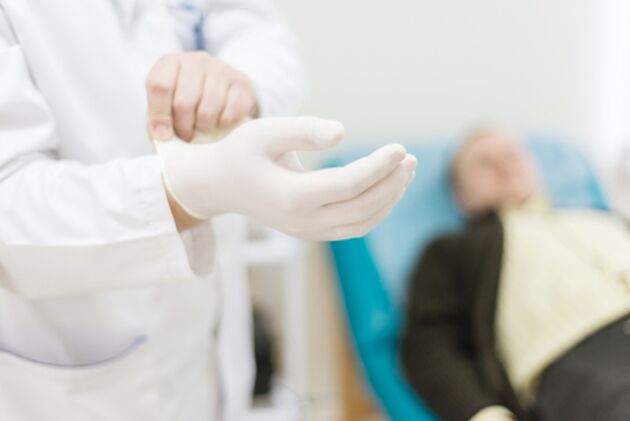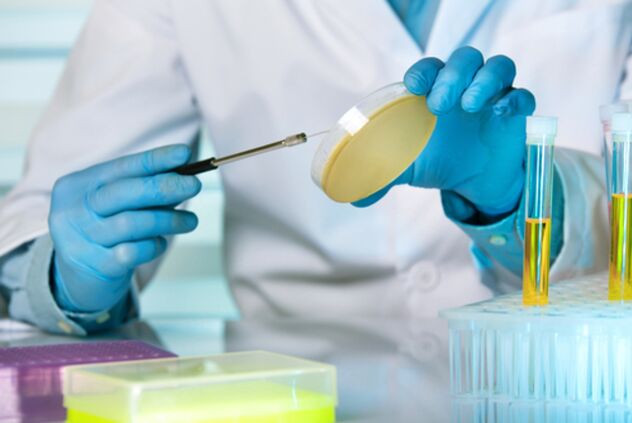
According to statistics, about 40% of men with prostate symptoms do not seek medical help. At the same time, the consequences of the disease, including the risk of male infertility, are very serious. Find out what symptoms a doctor should see for and what to do to avoid getting sick.
What is prostatitis
Prostatitis is an inflammation of the prostate gland or prostate, is one of the most common "male" diseases. Prostatitis is very different, they can occur due to infection and without it, with insufficient sexual activity and with excess, etc. This article will help you understand the basic nuances of the disease.
About 10% of men experience symptoms of chronic prostatitis, but only about 60% of them seek medical help (Nickel JC et al. , 2001).
Prostatitis affects men of all ages, and its prevalence continues to rise. Men under 50 make up 65. 2% of patients, according to various sources, the prevalence of the disease in men as a whole is 13. 2-35% (Lummus W. F. , 2001; Meares E. M. , 1990). According to other data, 8 to 35% of men aged 20-40 suffer from prostate inflammation. Among older men, the real appearance is "masked" by the incidence of benign prostatic hyperplasia (prostate adenoma), as their symptoms are largely the same. Up to 65% of patients with adenoma are operated on for one with an unknown prostate. (Nickel JC et al. , 2007). Since inflammatory diseases of the genitals are a common cause of male infertility, scientists speak of a threat to the nation’s reproductive health.
What is prostatitis
A simple division into acute and chronic is not enough to characterize prostatitis, the disease includes several syndromes with different clinical course. Consider which forms of the disease are isolated according to the modern classification (Krieger JN et. Al, 1999).
Category I: Acute bacterial prostatitis. . . A relatively rare species, accounting for only 5% of cases. It is a consequence of urinary tract infection, develops against the background of predisposing factors (impaired urine flow, suppressed immunity). In 5% of cases, it turns into a chronic bacterial prostate.
Category II: Chronic bacterial prostatitis. . . Alsosht is also a rare disease that is considered a recurrent urinary tract infection with the main focus on the prostate.
Category III: Chronic prostatitis / chronic pelvic pain syndrome. . . Previously, this disease was called chronic abacterial prostate and accounts for up to 95% of all diagnosed prostatitis (Habermacher GM, 2006). Chronic pain syndrome combines pathologies characterized by urological pain in the absence of a urinary tract infection. Does not include urethritis, cancers, narrowing of the urethra, neurological damage to the bladder. It is divided into categories IIIa and IIIb: with signs of inflammation and without signs of inflammation. These signs are determined by the laboratory, mainly by the presence of leukocytes in urine or prostate secretions.
Category IV: Asymptomatic inflammatory prostatitis. . . It is an accidental discovery when examining a patient. It is most often diagnosed when men are screened for infertility or an elevated level of PSA marker in the blood. We do not consider this type of disease in detail, as scientists have not yet developed a unified view of this form (Nickel JC, 2011).
Symptoms of prostatitis
Symptoms of Acute Prostatitis
The disease begins acutely, there is pain in the perineum, body temperature rises. The desire to urinate is frequent (at least 5-7 at night), urination becomes painful, difficult. Urine comes out in permanent parts, there is no feeling of pleasure from urinating. Blood can be found in the last parts of the urine. The pain is worse with bowel movements. This is a serious illness that requires urgent help.
Complications of acute prostatitis are:
- acute urinary retention;
- prostate abscess (formation of a purulent focus);
- paraprostatitis (inflammation of the tissues around the gland, may be caused by an advanced abscess);
- phlebitis of the paraprostatic venous plexus (inflammation of the surrounding veins).

Chronic symptoms of prostatitis
All types of chronic prostatitis (both bacterial and chronic pelvic pain syndrome) are similar. The picture of the disease is very variable, below is a list of symptoms that can present with varying severity.
- Pain:
- pain or discomfort in one of the characteristic areas (groin, shoulder girdle, testicles, penis, lower back, abdomen, rectum);
- pain when urinating or increased pain when urinating;
- pain during or after ejaculation;
- increased muscle sensitivity in the perineum;
- neuropathic pain;
- pain due to irritation of the intestines.
- Urinary symptoms:
- lower urinary tract (LUTS) symptoms associated with emptying (desire to empty the bladder, incontinence, desire to urinate, night push, pain when urinating);
- LUTS associated with obstruction (poor urine pressure, intermittent current, need to push);
- burning sensation in the urethra;
- recurrent urinary tract infections.
- Sexual dysfunctions:
- erectile dysfunction;
- violation of ejaculation (premature or delayed ejaculation, blood in semen);
- ulur epshin.
- Psychosocial symptoms:
- anxiety;
- depression;
- cognitive and behavioral impairment;
- decreased quality of life.
Men with chronic pelvic pain syndrome are more likely to have manifestations of psychological stress and sexual dysfunction (A. Mehik, 2001).

If you experience symptoms of prostatitis and chronic pelvic pain syndrome, you should see a urologist or andrologist. In case of severe symptoms of acute prostatitis, you should seek emergency help to prevent urinary retention and other complications.
Causes of prostatitis
Inflammation of the prostate develops under the influence of many factors. A healthy gland in the absence of predisposing factors has the potential to resist infection and inflammation. The onset of the disease is facilitated by a decrease in immunity, a violation of the flow of secretions from the prostate, inadequate sexual regime, difficulty in passing urine and deterioration of blood circulation to the pelvic organs. Other risk factors include cold climate, alcohol abuse and a sedentary lifestyle.
Acute prostatitis is a bacterial inflammation, its most common pathogens are Escherichia coli, Proteus, Pseudomonas aeruginosa, Enterobacter and some others. The disease develops when the infection enters the gland by passing urine, from a contagious infection, through the lymph from the rectum or with blood from other foci of infection. Sexual transmission of pathogens plays an important role.
Risk factors for acute bacterial prostatitis:
- phimosis;
- urinary tract infections;
- acute epididymitis (inflammation of the epididymis);
- unprotected anal intercourse;
- Bladder catheterization;
- surgeries performed through the urethra;
- prostate biopsy;
- violation of the secretion and secretion of prostate fluid.
The risk factors and causes of chronic bacterial prostatitis are similar to those of acute. Of particular importance are the causative agents of genital infections: Trichomonas, chlamydia, ureaplasma, mycoplasma.
Chronic pelvic pain syndrome is not currently considered a homogeneous disease; doctors find it difficult to name its root cause. Only in one-third of these patients did the biopsy reveal inflammatory changes in the prostate gland. It is believed that the main role in its development is played by immune, neurological and endocrine disorders.
Among the causes of the syndrome considered by scientists:
- infections
- autoimmune disorders;
- chemical inflammation due to urine entry;
- immune system disorders;
- urination into the prostate ducts;
- pain in the pelvic floor muscles due to their pathological tension;
- nerve block;
- psychological stress.
Diagnosis of prostatitis
Diagnosingacute prostatitisis decided on the basis of:
- complaints;
- medical examination;
- urine tests, which must include bacteriological culture to identify the pathogen.
In uncomplicated cases, prostate imaging is usually not necessary. Transrectal ultrasound (ultrasound) or computed tomography (CT) of the pelvis is done if urinary retention is severe and if a prostate abscess is suspected. PSA testing is also not recommended, as in an acute illness its level in any case will increase. Prostate biopsy is contraindicated due to pain and high risk of complications.
To facilitate diagnosischronic prostatitisdoctors use some special questionnaires that specify the history of the disease, changes in quality of life and detail the symptoms. During the examination, the doctor palpates the abdomen, performs a digital examination of the prostate gland (through the rectum), assesses the condition of the pelvic muscles. In most cases, the diagnosis is made on the basis of medical examination and bacteriological and clinical examination of urine or semen. Criteria for the diagnosis of chronic bacterial prostatitis are a history of recurrent urinary tract infections and a tenfold increase in bacterial levels in prostate secretions, sperm culture, or urine analysis after prostate massage (Budía A; 2006).
If the analysis of prostate and urine secretion does not provide sufficient information in the presence of symptoms of chronic prostatitis, the following additional studies are performed:
- 2-cup sample (urine test to determine the location of the infection);
- Sample with 4 cups;
- urine flow rate;
- determination of residual urine;
- cytological analysis of urine.

In the differential diagnosis (to exclude prostate stones, abscess, cancer), the following tests are also used:
- planting the stain from the urethra;
- screening for sexually transmitted diseases;
- PSA analysis;
- uroflowmetry;
- cystoscopes;
- prostate biopsy;
- retrograde urethrography;
- Kidney ultrasound;
- magnetic resonance, computed tomography.
Treatment of prostatitis
Treatment of bacterial prostatitis
Ideally, antibiotic therapy should be based on bacteriological data. But it usually starts before the results are obtained, assuming that the most common pathogens are intestinal bacteria. According to European guidelines for the treatment of urological infections, the drugs of choice in the treatment of acute and chronic bacterial prostatitis are antibiotics of the fluoroquinolone, macrolide, tetracycline groups. After specifying the pathogen, the antibiotic can be replaced.
Complicated acute bacterial prostatitis sometimes requires surgical treatment. In the case of an abscess, surgery is performed through the rectum or through the urethra. In the case of acute urinary retention, when it is impossible to pass the catheter through the urethra, a cystostomy is performed, the catheter is inserted through the abdominal wall above the pubis.
Additional treatment for acute prostatitis includes pain relief, fever, drinking plenty of fluids, stool softeners. Alpha blockers are also used to improve urine flow. After treating acute prostatitis, patients should abstain from sexual intercourse for a week.
Chronic prostatitis / Treatment of chronic pelvic pain syndrome
As we pointed out, the cause of this syndrome is very difficult to identify. Hence the difficulties with choosing therapy. Usually, the doctor starts treatment by prescribing 1-2 medications, which can be changed if the effectiveness is insufficient. European Guidelines for the Management of Chronic Pelvic Pain offer the following medications and treatments:
- Alpha blockers relax the bladder and prostate, significantly relieving symptoms.
- Antibiotics can also be prescribed because empirical experience has shown that they can be effective.
- Anti-inflammatory drugs improve the quality of life and relieve pain.
- 5-alpha reductase inhibitors relieve prostate symptoms.
- Muscle relaxants have a similar effect to alpha blockers.
- Phytotherapy. Quercetin bioflavonoid and some other medicines relieve pain through anti-inflammatory and antioxidant properties.
In chronic pelvic pain syndrome, placebo helps relieve symptoms by 30% (D. A. Shoskes, 1999)
Medication-free treatment:
- Prostate massage. Performed with one finger through the rectum, courses are recommended 1-3 times a week for 3-4 weeks.
- Physical methods:
- electromagnetic therapy;
- microwave thermotherapy;
- extracorporeal shock wave therapy.
- Surgical treatment includes endoscopic incision of the bladder neck, transurethral removal of the prostate gland and even its removal if other methods have failed. This method of treatment is rarely used.
- Psychological treatment. Deterioration of quality of life and difficult attitude of patients to the situation requires the intervention of a psychologist.
prevention
For warningacute prostatitisTimely treatment of any urological disease is required, remembering a safe sex life and avoiding genital infections. Partial prevention should be performed by physicians without prescribing unnecessarily invasive procedures (biopsy, cystoscopy) and radical cure of urinary tract infections.

Highlights of preventing chronic prostatitis:
- Personal hygiene. To prevent infections, intimate areas should be kept clean.
- Physical activity. When you sit for a long time, blood in the pelvic area stagnates, which can contribute to inflammation of the prostate gland. You need to get up and move at every opportunity. Stretching, aerobic exercises give a good effect. Among other things, physical activity reduces the anxiety often associated with prostatitis.
- Normal sexual activity according to age.
- Liquid. You need to drink enough to help flush bacteria out of your urinary tract.
- Diet. It is recommended to limit the use of foods that irritate the prostate gland: coffee, tea, carbonated beverages, spices, pickles, canned food, fried foods and alcohol. The percentage of fruits and vegetables in the diet should be increased. These recommendations are also important in treating the disease.
- Maintaining a healthy weight.
- Stress control. To do this, you can talk to a specialist (psychotherapist), learn how to relax.
- Safe sex to prevent infections.
- Avoid hypothermia.
- Timely visit to the doctor when dangerous symptoms appear: painful urination, frequent urination, discomfort in the lower abdomen and perineum.



























